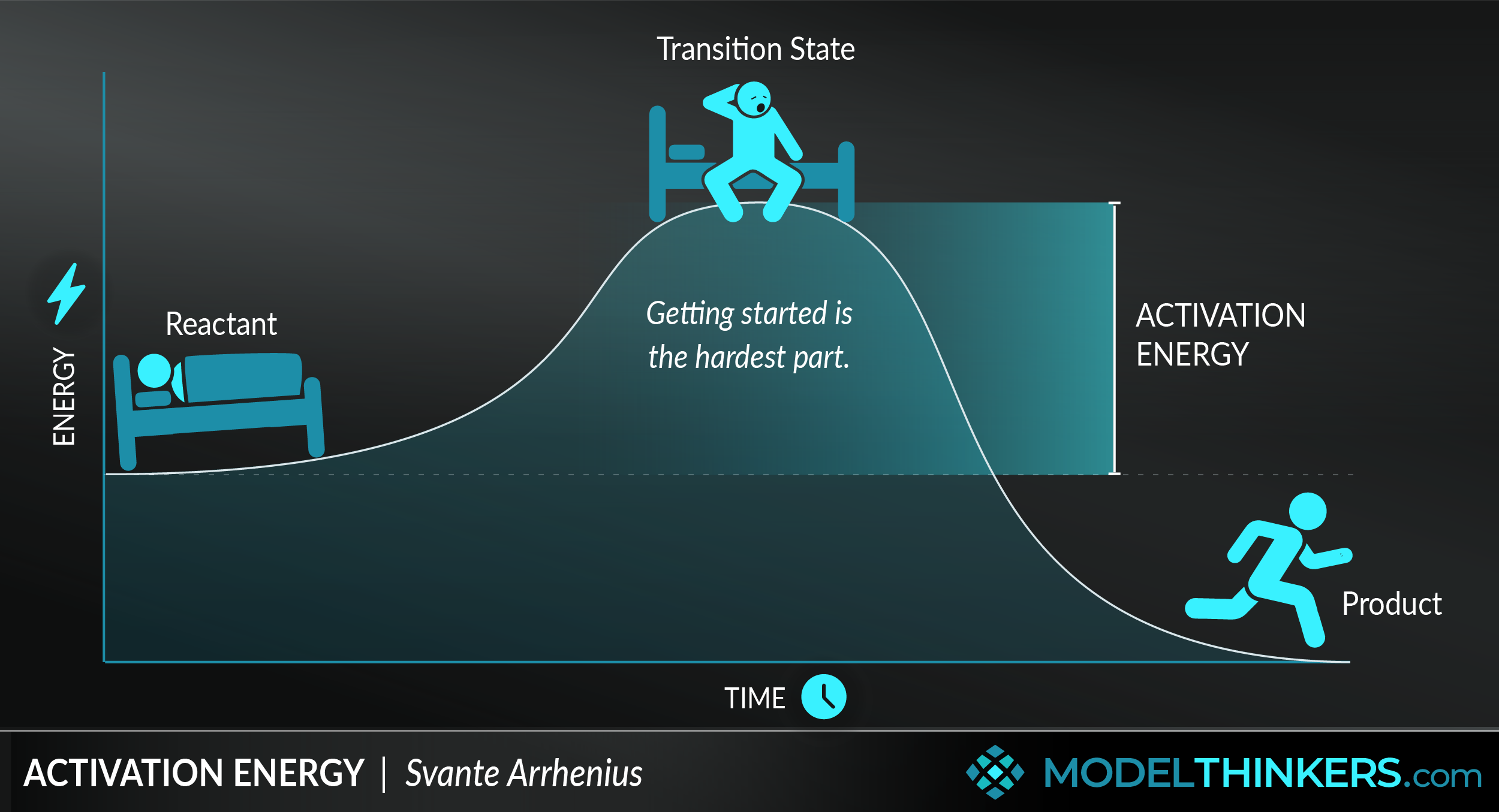


There's a saying that the hardest thing about working out is getting to the gym. Indeed, this mental model is a reminder that getting started is often the hardest part of any journey or change.
Activation Energy can be viewed as the disproportionately high energy required to get something moving, compared to keeping it moving.
STARTING OUT IS EFFORTFUL.
Activation Energy originated in physics and chemistry describing the minimal amount of energy required for a reaction to occur. For broader application, you can visualise it as the initial ‘hill’ or expenditure of energy that must be overcome to start something new.
It's a powerful mental model to understand the initial resistance that you, or your audience, will face to get started or restarted. When seeking a positive behavioural change, this model is a reminder to make that first step as simple and frictionless as possible.
COMPONENTS PLUS ENERGY.
Despite urban myths, combustion does not just occur spontaneously with the combination of elements alone, it takes additional Activation Energy to initiate a reaction and get things moving. When applying this principle to social contexts, Activation Energy becomes a reminder that relationships require more than just the addition of people. Whether you’re initiating a new cross-functional team or starting a new personal relationship — collaborative and social relationships will tend to require disproportionately high energy at the beginning.
HEMMINGWAY'S HACK.
Hemmingway offered writing advice to maintain momentum and avoid the block of Activation Energy that can be applied more broadly, he explained: "The best way is always to stop when you are going good and when you know what will happen next."
This technique creates ongoing momentum that leverages the *Zeigarnik Effect,* and your tendency to remember unfinished work, and avoids negative challenges of *Temporal Landmarks,* and your tendency to create Fresh Starts. Practical applications of this hack might include writing yourself a morning To-Do List before you go to bed; setting up your next meeting for the following week before you knock off on Friday; or putting down a book you're reading mid-chapter.
FROM PERSONAL CHANGE TO EXPERIENCE DESIGN.
Whether you're trying to start studying, exercise, or do that job you've been avoiding — ask the question 'how might I reduce the Activation Energy here?' This might be as simple as finding an easy or small first step. At the same time, be aware of competing behaviours — of watching TV, playing video games, etc. — that might have low Activation Energy. You will naturally gravitate towards options with lower Activation Energy, so consider how you can change this with *Nudges* to your environment, *Habits,* and shifts to your routine.
In terms of experience design, consider how Activation Energy is reduced by physical shops that have large open doors and external displays; online businesses that offer freemium content; and how fictional books and TV series use a 'big opening' and narrative hook to pull you over the Activation Energy of becoming familiar with new characters, worlds and plot.
IN YOUR LATTICEWORK.
Reduce Activation Energy by incorporating models including the *Domino Effect, Critical Mass/Tipping Point* and *Catalysts.* Also, consider how you might make use of Nudges that reduce friction by applying the EAST Framework. The likes of B.J. Fogg and James Clear have also recommended focusing on small *Habits,* reducing Activation Energy, and providing a greater chance for success as a result.
Activation Energy can help explain the Lock-in Effect in terms of customer behaviour, and the challenges of 'storming' in the 5 Stages of Teaming. Finally, as described above, consider how you can use the Zeigarnik Effect and *Temporal Landmarks* to better challenge Activation Energy.